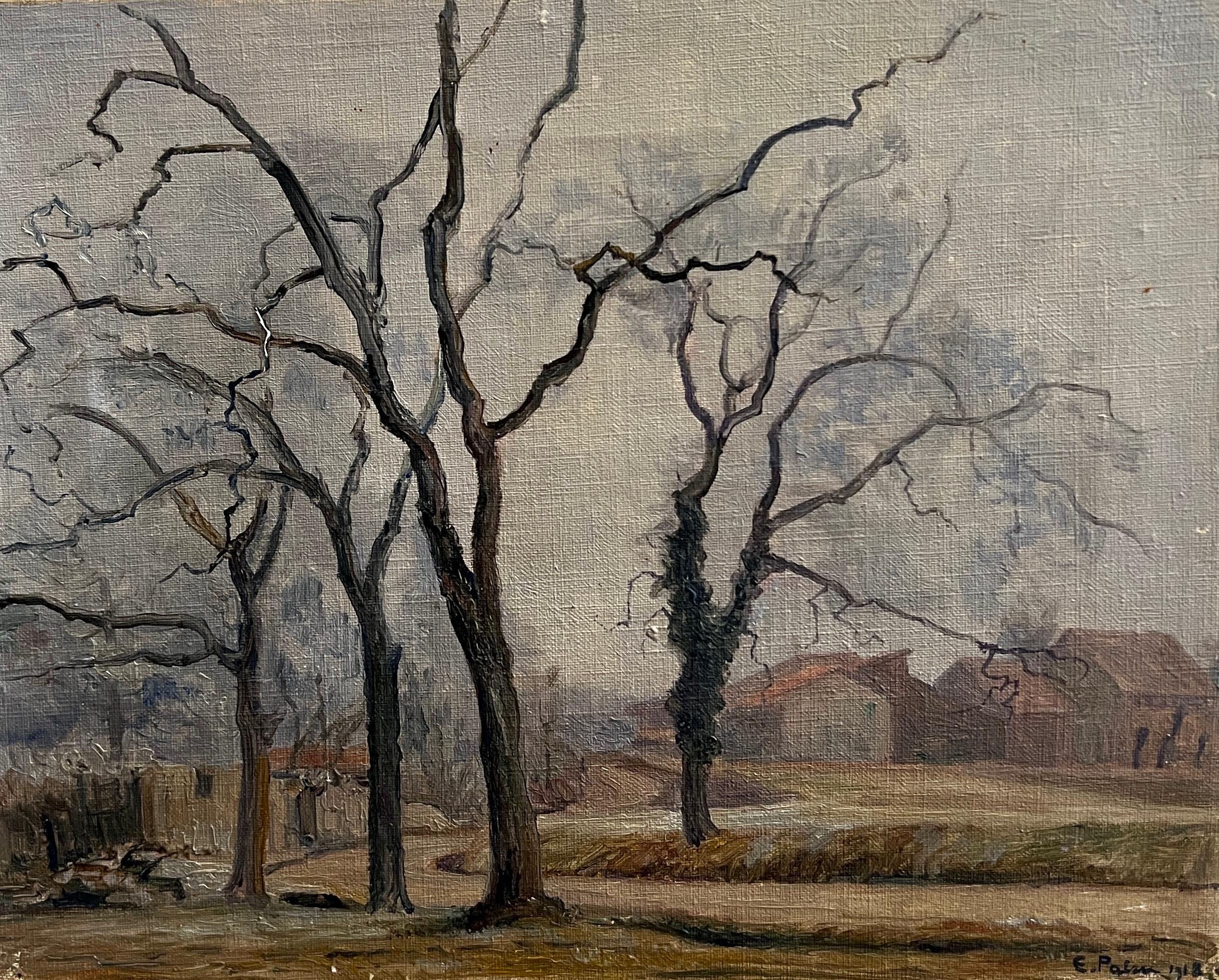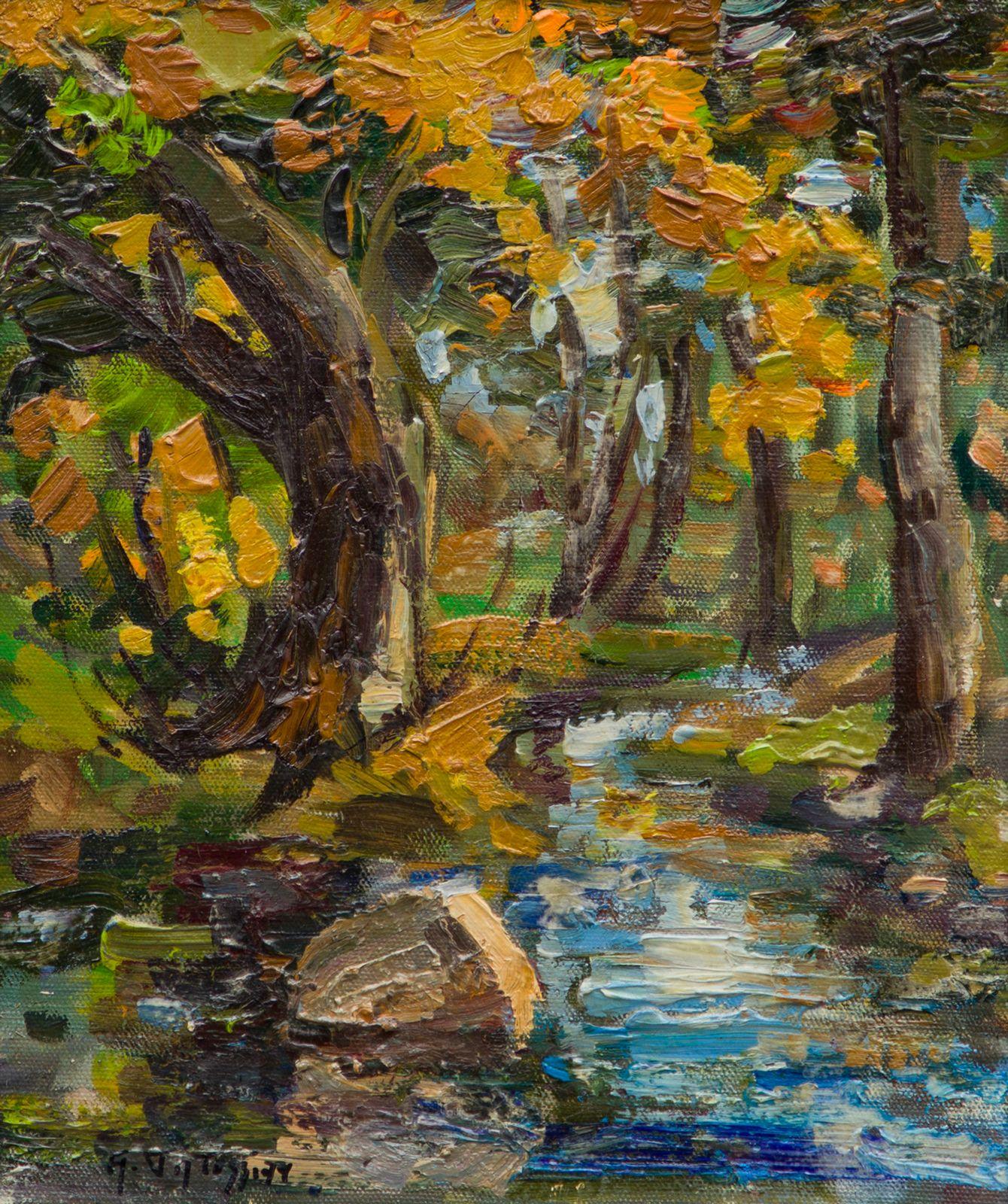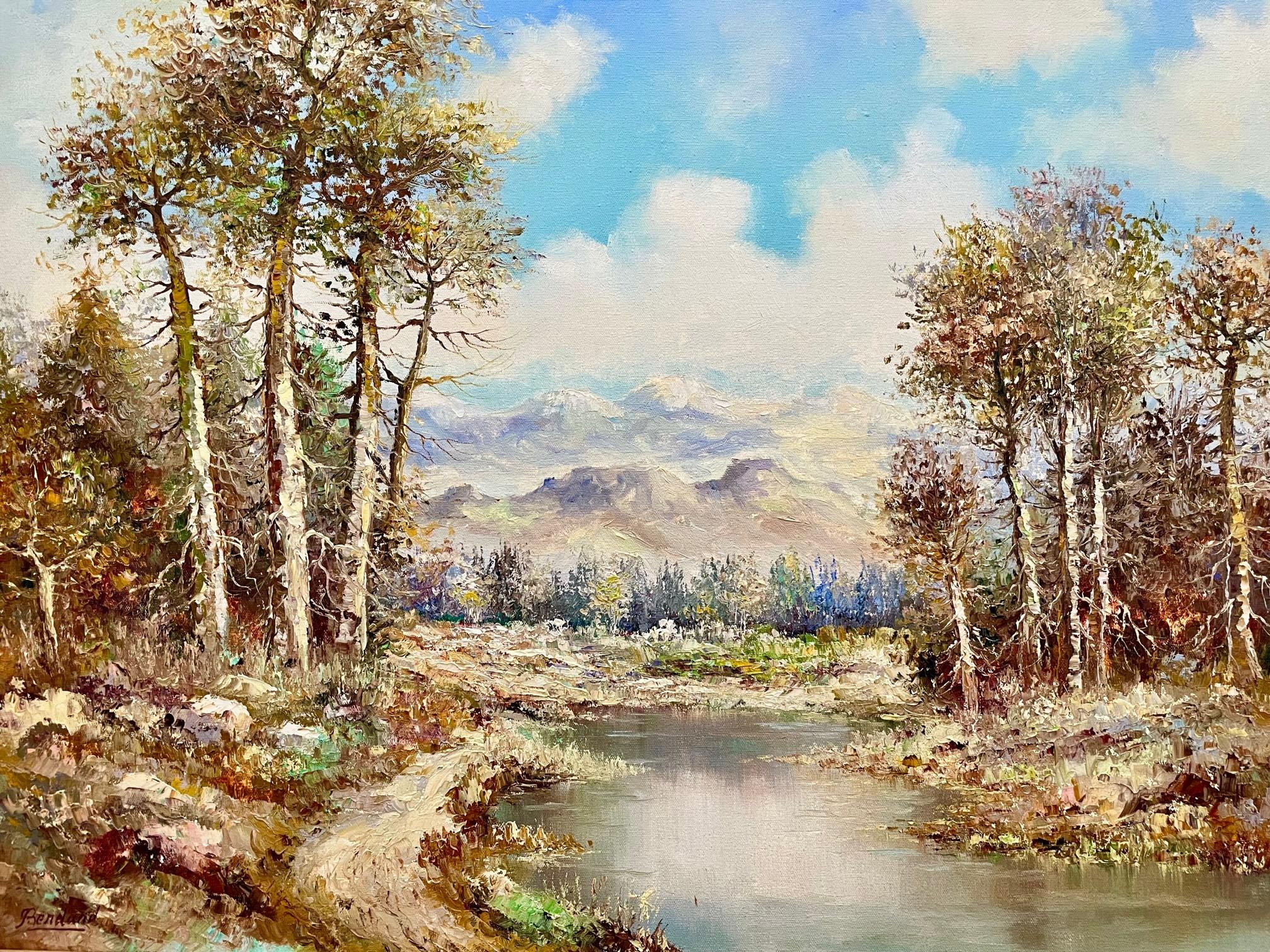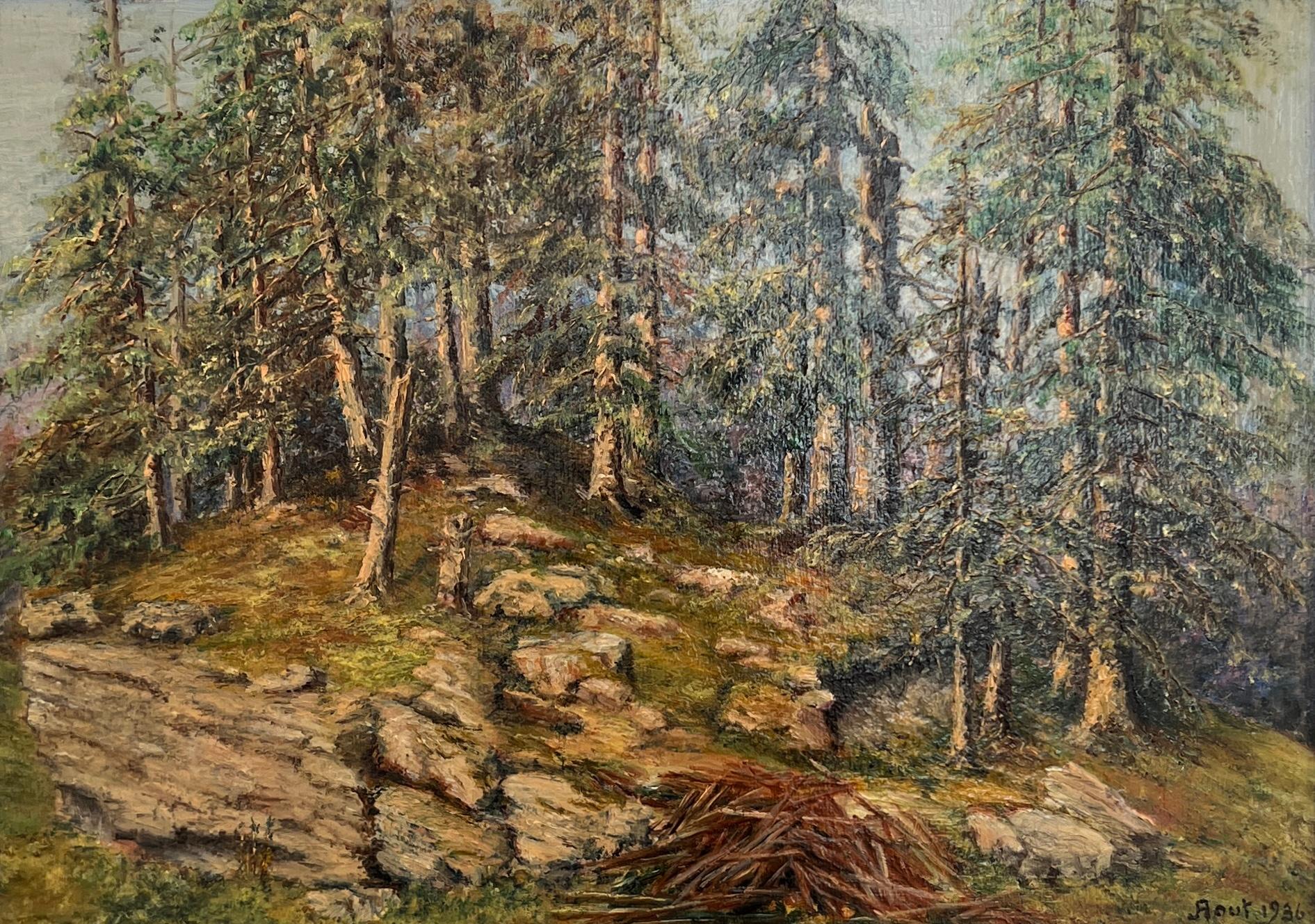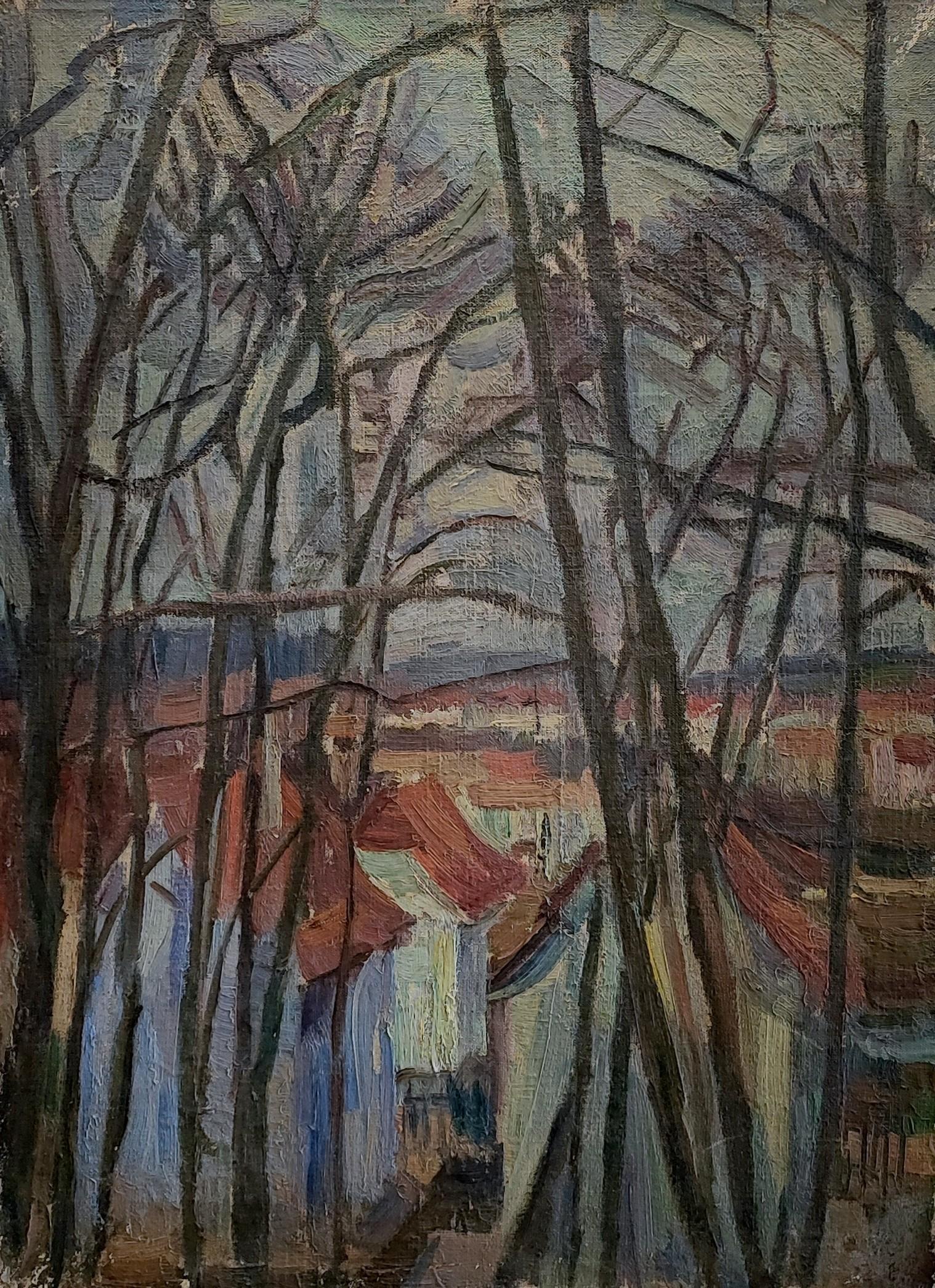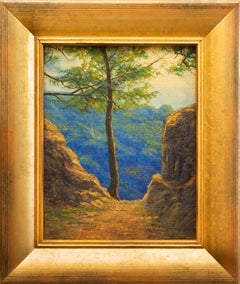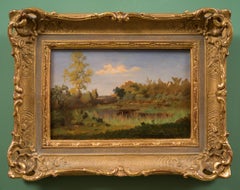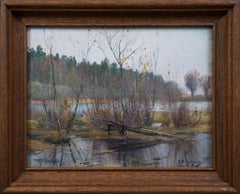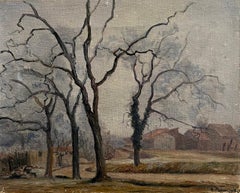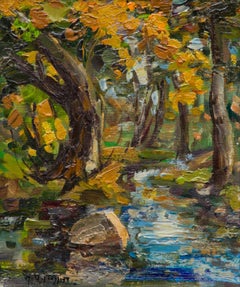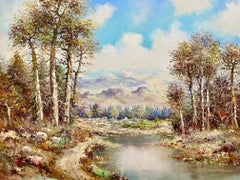Items Similar to Autumn Pathway, by a Follower of Carl Blechen
Want more images or videos?
Request additional images or videos from the seller
1 of 9
Autumn Pathway, by a Follower of Carl Blechen19th century
19th century
$2,353.86
£1,777.59
€1,990
CA$3,292
A$3,600.83
CHF 1,889.63
MX$43,063.93
NOK 23,846.99
SEK 22,246.36
DKK 15,158.88
About the Item
The painting shown is a serene landscape, inspired by the renowned German artist Carl Blechen, known for his dramatic and romantic landscapes. Though created by an unknown artist, this work echoes Blechen's style, particularly his emphasis on nature's grandeur and the subtle interplay of light and shadow.
In this painting, we see a quiet path winding through a hilly terrain, framed by autumnal foliage. The artist skillfully captures the texture of the rugged terrain and the rich, earthy tones of the trees, which seem to whisper the onset of fall. Two figures on horseback (or walking?) are seen in the distance, adding a sense of scale and movement to the otherwise still scene. The sky above is painted with soft, gentle strokes, creating a serene backdrop that complements the warm colors of the landscape.
Carl Blechen, born in 1798 and active during the Romantic era, is celebrated for his ability to convey the emotional power of nature. His works often feature dramatic contrasts and a keen attention to atmospheric effects, which influenced many artists who followed. Blechen's landscapes are not just representations of nature but also reflections of human emotions and the sublime beauty of the natural world.
This particular painting captures the essence of Blechen's influence, showcasing the artist's appreciation for nature's tranquility and beauty, even though their identity remains a mystery.
unframed 27 x 22 cm
framed 34.5 x 24.5 cm
- Creation Year:19th century
- Dimensions:Height: 10.63 in (27 cm)Width: 8.67 in (22 cm)
- Medium:
- After:Carl Blechen (1798 - 1840, German)
- Period:
- Condition:
- Gallery Location:Stockholm, SE
- Reference Number:1stDibs: LU1445214902672
About the Seller
5.0
Platinum Seller
Premium sellers with a 4.7+ rating and 24-hour response times
Established in 2020
1stDibs seller since 2020
219 sales on 1stDibs
Typical response time: 1 hour
Associations
International Confederation of Art and Antique Dealers' Associations
- ShippingRetrieving quote...Shipping from: Stockholm, Sweden
- Return Policy
More From This Seller
View AllA Beautiful View at the End of the Road, c. 1940-50, Oil Painting on Canvas
Located in Stockholm, SE
A very beautiful landscape painting by a yet unknown artist signed H.Lövström.
The colours are strong and the three-dimensionality is impressive...
Category
1940s Naturalistic Landscape Paintings
Materials
Canvas, Oil
Impressions of Nature: After Rousseau
By Théodore Rousseau
Located in Stockholm, SE
This charming landscape painting, clearly influenced by the style of the French artist Théodore Rousseau, captures the tranquil beauty of nature with an emphasis on detail and atmosp...
Category
Late 19th Century Naturalistic Landscape Paintings
Materials
Canvas, Paper, Oil
A Small Old Painting Called Rocky Path With Figures
By Thomas Barker of Bath
Located in Stockholm, SE
This exquisite painting, titled "Rocky Path With Figures" is a captivating example of Thomas Barker of Bath's talent. Despite its small size, measuring only 13 x 11 cm, this piece sh...
Category
Early 19th Century Figurative Paintings
Materials
Oil, Panel
$3,217 Sale Price
20% Off
Plein Air Masterpiece – Schultzberg's Kolbotten in Autumn, Nacka
Located in Stockholm, SE
This evocative autumnal scene, painted in 1885, coincided with Schultzberg’s breakthrough at the Royal Academy’s Spring Exhibition. At only 23 years old, he garnered the attention of...
Category
1880s Impressionist Landscape Paintings
Materials
Canvas, Oil, Masonite
French Landscape by Philippe Marie Picard, Oil on Canvas, Signed, Dated -46
By Philippe Marie Rene Picard
Located in Stockholm, SE
Philippe Marie Picard (1915-1997) French
French Landscape
oil on canvas
signed Ph m Picard
dated a tergo 16.4 -46
canvas size 12.99 x 22.04 inches (33 x 56 cm )
frame 23.03 x 31.49 inches (58.5 x 80 cm)
Provenance:
A Swedish private collection.
The Artist:
The year was 1915, and Philippe Marie was born in the small village of Neuvy-le-Roi in France. His parents were Albert Picard and Marie Lehoux; he had a total of six siblings. After studying at the Lycée Descartes in Tours, he entered the studio of the artist François Sicard...
Category
1940s Landscape Paintings
Materials
Canvas, Oil
Autumn Landscape by Swedish Impressionist Painter Axel Zachrisson, c. 1920
Located in Stockholm, SE
This exquisite painting by Axel Zachrisson, a Swedish artist, offers a serene glimpse into the tranquil beauty of Dalsland, Sweden. Created around 1920, the artwork captures the esse...
Category
1920s Naturalistic Landscape Paintings
Materials
Canvas, Oil
You May Also Like
Autumn path
Located in Riga, LV
Autumn path. Oil on canvas, 61x71 cm, frame included.
Category
1990s Realist Landscape Paintings
Materials
Oil, Canvas
$1,703 Sale Price
20% Off
Autumn landscape
Located in Genève, GE
Work on canvas
Category
1910s Landscape Paintings
Materials
Oil
Fall Landscape
By Armand Tatossian
Located in Westmount, QC
Armand Tatossian, Canadian, 1948-2012
Fall Landcsape
Oil on canvas
12 x 10 in
Signed lower right;
framed
For our US customers:
1) The artwork is shipped from Montreal, Canada;
2) P...
Category
1980s Landscape Paintings
Materials
Oil
Autumne au Village, Lake, Mountain and Tall Trees in Landscape 1970s
Located in Hillsborough, NC
This crisp wintry contemporary landscape scene is signed 'Berdard' with the artist name and title 'Autumne Au Village' verso. Painted with acrylic on canvas in the mid 20th century,...
Category
Mid-20th Century Contemporary Landscape Paintings
Materials
Canvas, Acrylic
$577 Sale Price
65% Off
Path of the woods
Located in Genève, GE
Work on cardboard
Golden wooden frame
32 x 40.5 x 3 cm
This work of art depicts a forest scene of remarkable and serene beauty. The painting captures the majesty of a coniferous for...
Category
1930s Landscape Paintings
Materials
Oil
Autumn
Located in Genève, GE
Work on canvas
Category
Mid-20th Century Landscape Paintings
Materials
Oil
$1,159
More Ways To Browse
Modern Art Urban Landscape
Naif French Painting
Newcomb Macklin
Red Barn Painting
Robert Hills
Ronald Oil Paintings
Tuscan Landscape Paintings
Waugh Oil Paintings
19th C British Woods Painting
Black Sails
California Coast Painting
Contemporary Dutch Landscape
English Boat Paintings
Fishing Oil Painting Scene
Haystacks Oil
Medicine Man
Mount Washington
Oil Painting 1913
